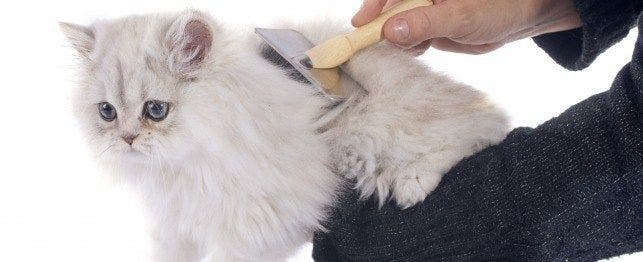
Grooming Your Kitten
Although kittens are known to be quite fastidious, they may need some assistance in keeping themselves clean. Grooming sessions provide good quality time for you and your cat. They also allow you to do a quick health check on your kitten.
You should begin grooming your kitten soon after taking her home. This allows you to familiarize yourself with her particular features – those that make her uniquely different from other kittens – and to learn what is normal for your pet. A simple grooming regimen will also get her used to being handled so, if she needs treatment later in life, it won’t be a traumatic experience for either of you.
What to Groom
- The face. Your kitten’s eyes should be checked frequently for signs of discharge because upper respiratory infections involving the eyes are quite common early in life. If you have more than one pet at home or your kitten spends any time outdoors, check also for injuries to the eyes.
- The mouth. Teeth should also be inspected for signs of tartar buildup or gum disease (not common in very young cats). If your kitten has bad breath it may indicate that there’s another, more serious problem affecting other body systems. As always, if you suspect any problems, make an appointment with your veterinarian.
- The ears. Most kittens have clean ears. However, if you obtain a kitten that was a stray or lost her mother very early, she may not have had the proper attention. Hearing is a very important part of your kitten’s awareness of her surroundings and a variety of diseases can affect your kitten’s ears. Therefore, it’s important that her ears be kept clean. Using a cotton swab to clean ears can be very effective but it can be dangerous, too. Be careful not to lose sight of the cotton swab’s tip; delving too deeply into the ear canal could result in permanent damage to the structures deeper within the canal.
- The coat. Kittens spend a great deal of time caring for their coat. They have a barbed tongue that is perfect for removing dead skin and loose hair while stimulating blood circulation. But even a feline tongue is no match for a dense winter coat or the thick hair of some longhaired cat breeds.
It’s best to groom your kitten using a brush with fine, relatively stiff bristles, such as a wire brush. She’ll get used to the brushing and actually learn to enjoy it. If she goes outside, place an old white sheet on the table and groom her there. This will allow you to see what falls off her. Mostly you’ll see hair, dead skin, plant particles and dirt. But you’ll also be able to see if she’s picked up some fleas or ticks. Flea dirt will fall off onto the sheet. These are little black specks of flea excrement that turn reddish if a drop of water is added. Your veterinarian will have the proper treatments.
Longhaired kittens should be groomed as often as possible. When knots start to develop, it’s almost impossible to get your kitten’s fur back in order. Her fur may become so matted that a visit to your veterinarian or professional groomer may be necessary for a whole-body clipping. Never attempt to cut knots or matted hair since it’s very easy to get your kitten’s skin caught in the scissors.
- Toenails. Trimming toenails can be confusing as well as difficult. Trimming toenails should be done with the proper instruments. There are a variety of nail trimmers available at pet stores or your veterinarian’s office. Human nail trimmers or scissors generally do not work on dogs and cats.